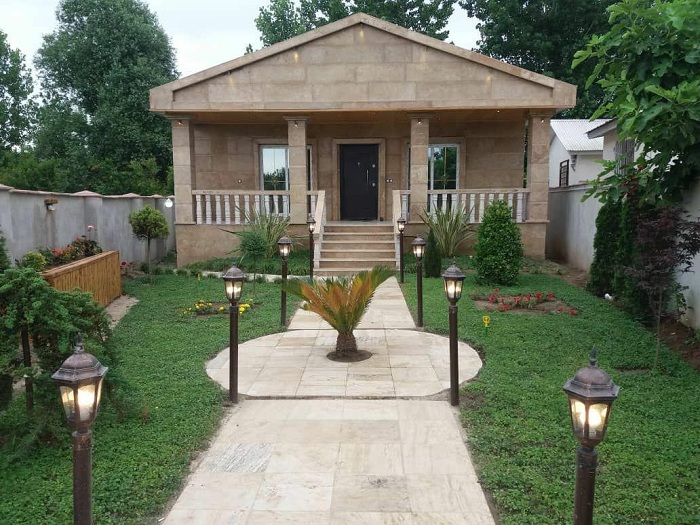Empty houses in Iran, Europe and America - Part II

An economic expert on statistics on the composition of vacant homes in Europe and the United States believes that any policy that seeks to change the rate of vacant homes with government intervention must consider its short-term and long-term consequences.
According to the International Exhibition of Iranian Stone, Hamed Qudussi, an economist, in the first part of a memo published on "A Look at the Phenomenon of Empty Houses in Iran, Europe and the United States", laid the theoretical foundations for the formation of vacant houses. Introduced all countries of the world, including Europe and the United States; According to him, the rate of vacant houses in Tehran is about twelve percent, the average in the United States and European countries is almost the same and even higher, about eighteen percent.
In the second part of this memo, he points out the motives for the existence of vacant houses and raises a political warning, the full text of which you can think of:
In the previous post, we talked a little bit about the theoretical foundations of balancing an empty house. Now let's look at some numbers. But first, let's look at what motivates the existence of an empty house and its subdivisions in statistics:
More or less important in the statistics of vacant houses are the components of vacant houses: second house / holiday / villa, rented house waiting for the customer, house bought for investment purposes (especially by foreigners), house default and in the possession of the bank, ownership house waiting for the customer , A house bought for demolition and reconstruction, an old house abandoned by the owner. All of this builds up empty houses in the economy.
Note that the vacancy rate among rental homes is much higher (about five times) than the vacancy rate, which is clear: the tenant can easily vacate the house in a few months, and there is no guarantee that the next person will be present immediately. The landlord usually does not vacate the house before selling.
Let's look at the United States: the rate of vacant homes is twelve percent, of which about five percent of vacant homes - for various reasons mentioned above - are outside the market and are not actually supplied; About three percent of the second house and vacation (villa), about two percent of the rental house waiting for the customer and about one percent of the property waiting for the customer. (Note that in the United States, the share of rental housing is less than that of total housing. As a result, two percent of the total is a large percentage of rental housing itself.)
Now let's look at Europe as a country: on the one hand, we have countries with a very high vacancy rate of about 30 percent (Greece, Cyprus, Croatia, Spain, etc.). The cause is likely to be a combination of a second home, foreign buyers and an economic crisis. On the other hand, in countries such as the Netherlands, Germany, Finland and Denmark, the rate is 7 to 12 percent. If we look a little inside the countries, we see a lot of diversity within the country. In Germany, for example, vacancies vary from four percent to fourteen percent in different states.
What about Iran? In Iran, we have about "twenty-three million housing units" and it is claimed that the number of vacant houses is about two and a half million and holiday houses are about two million. Of course, experts have a lot to say about the accuracy of these numbers, their diversity in different cities, the combination of vacant houses in terms of quality, area and price (luxury, northern urban or consumer) and the like.
Conclusion: The rate of vacant houses is not a mechanical number that we think is inflated for itself and can be deducted with a needle - like the idea of taxing vacant houses and the like. The vacancy phenomenon itself is part of the country's economic realities and the dynamism of the housing market, reflecting macroeconomic factors (eg, steady rise in nominal prices and household demand to cover inflation), search friction, non-standard construction, poor demand due to recession, preference Luxury homeowners have a shortage of long-term investment opportunities in other markets to keep them empty. As a result, the nature of this phenomenon must be carefully analyzed before any policy-making idea and with the "principles of economics and models of housing / urban economics" and not subject to emotional and analytical and media analysis.
Policy Warning: Any policy that seeks to change the rate of vacant homes from above and with government intervention (if only to be successful) must be very precise about its short-term, long-term consequences, such as the effect on "rental rates and rent-to-price ratios." Think of "incentives to build and supply new housing in the long run", "incentives to create formal contracts", "administrative corruption in tax assessments", "hiding real prices in transactions" and so on. At the same time, such a policy should explain what the effect will be on the "equilibrium price" of the market. For example, it is not clear whether the situation of ordinary consumers in the north of Tehran will really improve with the arrival of a series of luxury homes. Unthinking and crude policies may make the housing market worse.










